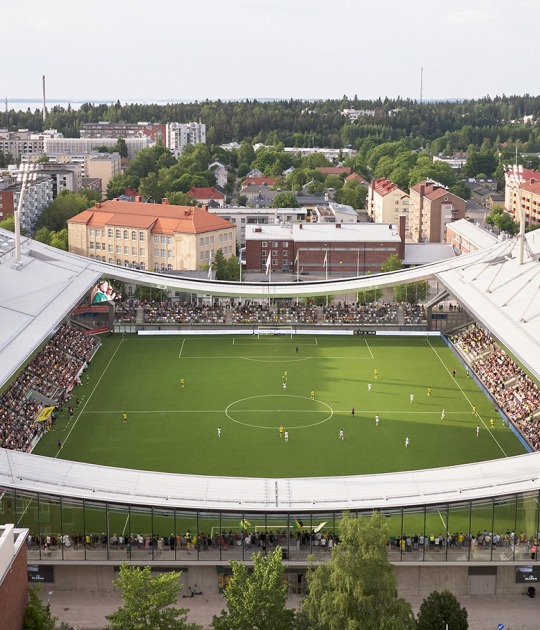
The project developed by Territorial is organized through corridors that connect the different spaces of the program, prioritizing the views of the landscape, and finding the chapel as the central space of the complex. The project generates different paths to the graves where shaded routes that intertwine with the views accompany the building in its intervention in the landscape.
The building also relates to the landscape through the materials used for its construction, using color tones prevalent in pre-Hispanic times to connect with the environment and the historical memory of the place. The spaces are defined by the treatment of light and materiality, seeking to generate a special experience for visitors.

Camposanto Mapfre Chiclayo by Territorial. Photograph by Eleazar Cuadros.
Project description by Territorial
The Mapfre Chiclayo Cemetery Phase 1 is located in the province of Monsefú, Lambayeque, Peru. Initially, the area was occupied by crops and rice fields, distributed in a flat and slightly rugged terrain corresponding to the basin of the Chancay River. This river branches into channels, turning the area into a fertile valley. In the distance, the “El Reque” hill stands out as the only monumental element in the middle of the vast terrain. It has become a significant landmark for both the place and its residents. The “El Reque” hill and the valley are accompanied by various archaeological complexes within the parcel of the place such as "Siete Techos" and "Ventarrón". The latter, with more than 4500 years of history, preserves the oldest murals in the continent of America.
The proposal is conceived as an intervention in the landscape. The building seeks to subtly alter the horizontality of the place by constructing a perpendicular wedge-shaped structure that emerges from the ground to the main road. The second component is the chapel. Through its verticality, it rises as the second monumental element of the territory. Its orientation is conditioned by the intention to dialogue with “El Reque” hill, thus celebrating the importance of the hill within the collective imagination of the place. Likewise, the body of the building, through its relationship with the ground and its verticality, evokes the search from the earthly towards the transcendental.

The project aims to propose a new way of understanding the architecture of a cemetery, a single building that houses most of the necessary equipment for its operation. It is conceived as an element in contact with the ground, which is integrated into the terrain becoming part of it. The central area accommodates various programs of the project, such as the chapel, the cafeteria, the offices, the wake room and the services. Throughout the building exposed materials such as concrete and wood are showcased. A structure with reinforced concrete slabs is proposed to free up space and allow for fluidity when navigating the project. The roof is unified with a level treatment, making it perceived as a green roof as part of the comprehensive landscape approach.
Spatial permeability was a constant consideration in the spatial sequence of the project. Therefore, corridors that traverse the entire project and connect the parts of the site are proposed, prioritizing the views of the landscape. Landscaping is proposed along these paths throughout the project, reinforcing the act of the burial ritual. These predominantly pedestrian corridors with some vehicular access are understood as pause spaces for rest, which, along with the accompaniment of trees, provide shade during the ritual.

From the beginning, the project proved to be a challenge as the design of sacramental spaces should signify an event where architecture should subtly accompany the user's experience, turning the space into a memorable and harmonious place. The project holds architectural value from the exploration of form and its correspondence with space and structure. Spatial exploration linked to the structure allowed for no changes in execution. As a result, the value lies in the architectural discipline of identifying the components of a building to articulate them in such a way that changes do not occur.
The project resolves the landscape with the burials in a master plan, aiming for the pathways to be shaded routes and linking the views to these ones. The exploration of the project's materiality is a vital part of the relationship with the landscape, as it sought to use color tones that were prevalent in the pre-Hispanic era to connect with said landscape and work alongside collective memory. Therefore, the inhabitants feel the proposal as their own work and associate it with the place where they are. The work has served as a guideline for the design of subsequent projects, not only for its appearance but also for its significance. The project is also a result of the search for the atmosphere of the space through the work of light and materiality. We have aimed for light to have weight, for space to be defined by the entrance of light, naming this search "The Weight of Light."



























































